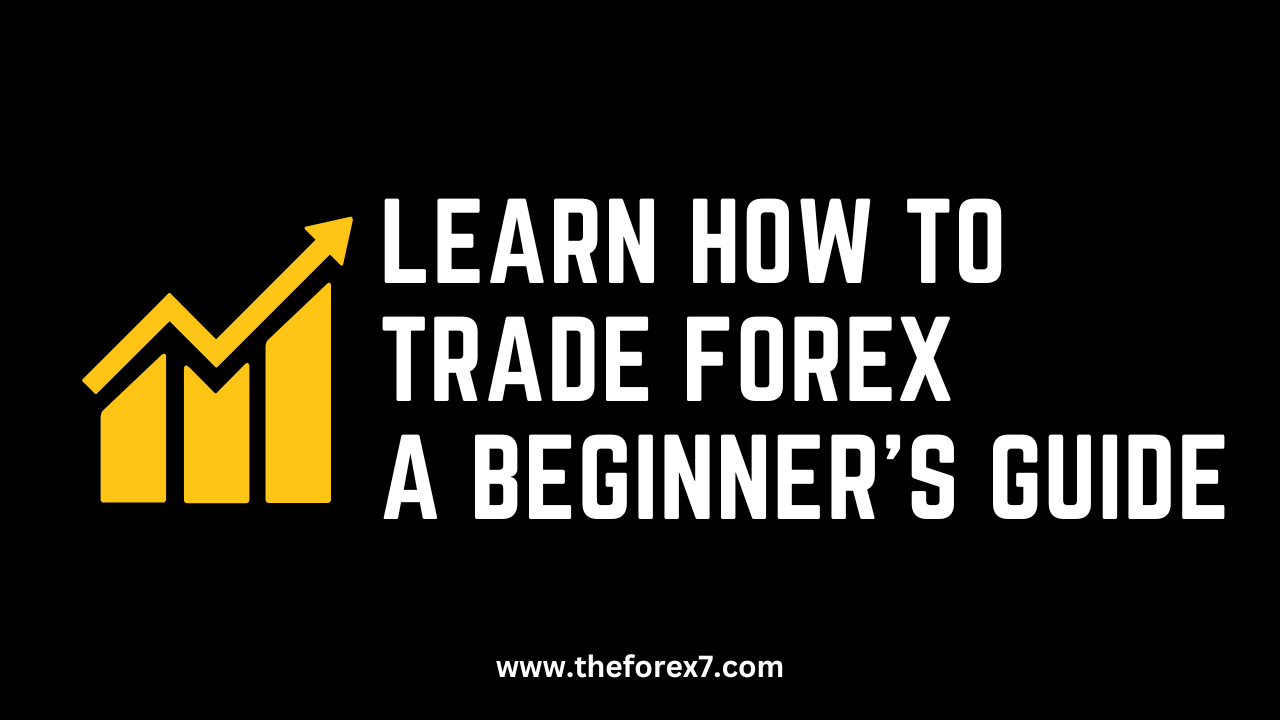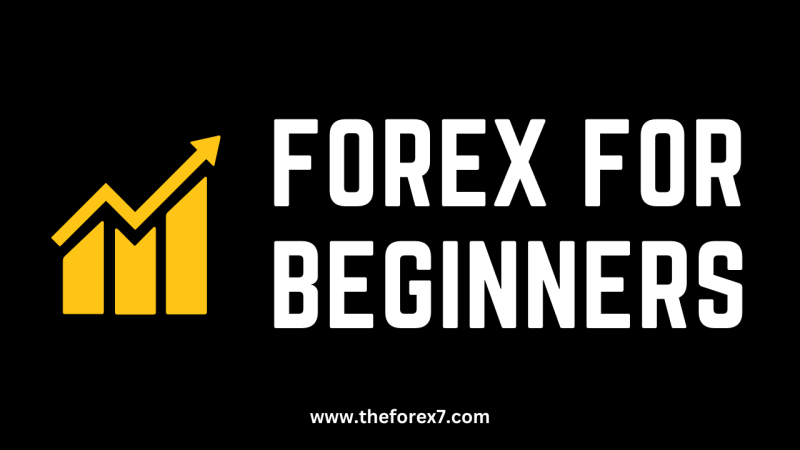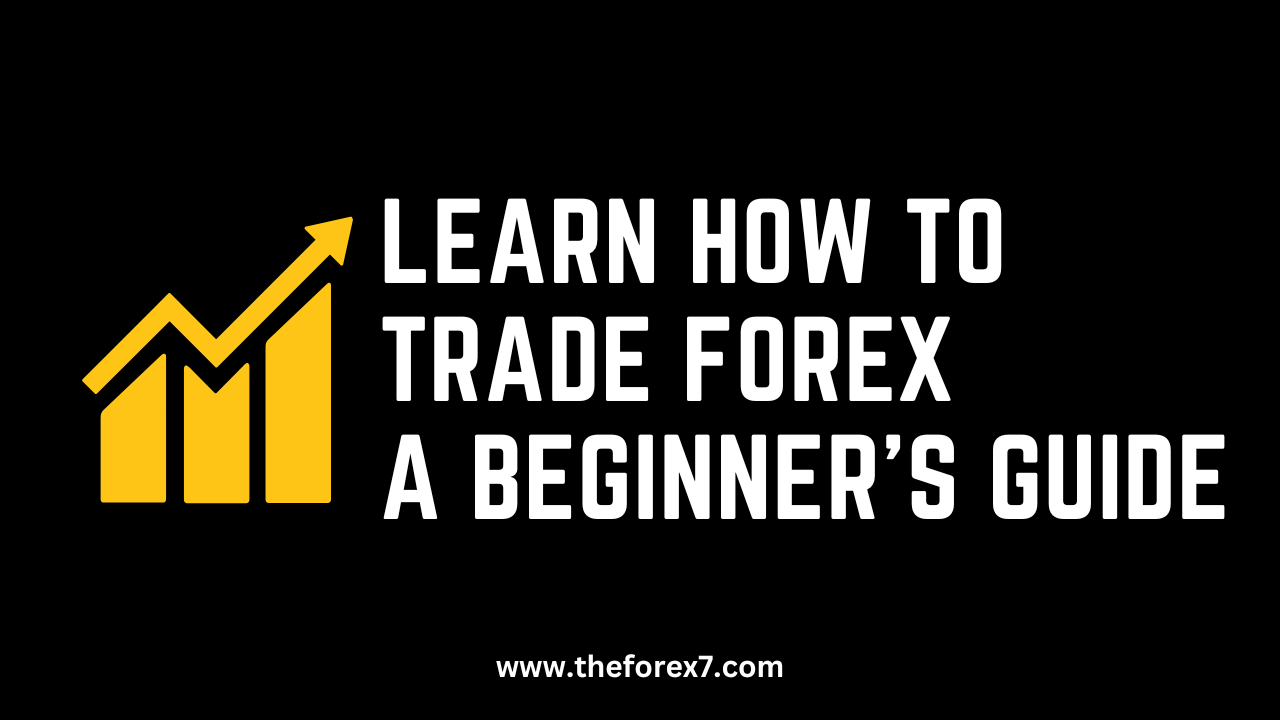Learn Forex Trading | Trading Course and eBook
Regulation, Individuals, Retail forex brokers, Institutions trade, Hedge funds
Course: [ FOREX FOR BEGINNERS : Chapter 1: Historical Background of Forex ]

Forex, or foreign exchange, is the market where currencies are traded. It is the largest financial market in the world, with trillions of dollars exchanged every day. Forex trading involves buying one currency and selling another currency simultaneously, with the aim of profiting from changes in their exchange rates.
Participants
One would think that the majority of
foreign exchange would take place for necessary economic purposes, such as to
facilitate international trade. Even the most rudimentary analysis, however,
shows that this is definitely not the case. For example, the British pound and
the Japanese yen are exchanged at a rate that is 50 times greater than would be
required for purposes of trade. For the US dollar and New Zealand dollar, the
ratio of forex turnover to trade exceeds 100! You can see from the left-hand
panel of Figure 1-4 that the relationship between forex volume and Gross
Domestic Product (GDP) is similarly out of proportion, especially for Singapore
and Hong Kong. The right-hand panel of Figure
1-4 shows that even non-financial participants exchange currencies at a
rate that is far greater than necessary for normal business operations.

Figure 1-4. Ratio of forex market turnover to
selected economic indicators
Corporations
To be sure, there is still plenty of
foreign exchange that is conducted for non-speculative economic purposes. Any
company with overseas suppliers and/or that sells in overseas markets will need
to exchange currency on a regular basis. In fact, many multinational companies
have entire departments focused entirely on managing their forex operations and
hedging the risk that comes from fluctuating exchange rates. By way of example,
consider that Apple Inc. must pay its Chinese suppliers in Chinese yuan, but
that its accounts are denominated in US dollars. If the US dollar depreciates
by 20% against the Chinese yuan, it would have the same effect as if Chinese
wages had risen by 20%. There are several strategies that Apple Inc. has at its
disposal to minimize the impact of such currency fluctuations on its operating
profits, which I will explore in Chapter 7.
At the end of every fiscal year,
multinational companies will typically repatriate a significant portion of its
earnings in order to pay taxes and dividends. For a period of a few weeks,
these flows are often significant enough to influence exchange rates. This is
especially true for Japanese multinationals, which are primarily
export-oriented and must convert billions worth of foreign currency back into
yen.
When you consider that non-financial
customers account for more than $500 billion (about 13%) in daily forex
turnover, it is immediately apparent that multinational companies are doing
more than simply exchanging currency for risk management purposes. Instead,
many corporations engage in forex trading for speculative purposes. Some are
prodded into doing so by their financial advisers while others engage in
speculative forex trading under their own accord. In fact, it’s not uncommon
for a multinational company’s forex activities to cause it to swing from profit
to loss, or vice versa. At the very least, most global companies will recognize
the impact of exchange rates on their bottom lines when they release their
quarterly earnings.
During the height of the 2008 credit
crisis—when exchange rates were fluctuating wildly—Hong Kong-based CITIC Group
shocked the markets when it announced a $2 billion loss from “unauthorized”
forex trades. A spate of similar announcements from other companies followed in
2009 and 2010. As a result, some companies have curtailed all forex activities
that are unrelated to core operations.
Banks and Broker-Dealers
Banks and broker-dealers (also known as
prime brokers) account for $1.5 trillion in daily forex turnover. (The actual
figure is certainly much higher, since trading by other financial institutions
is still facilitated by banks. This figure represents trading volume in which a
bank or broker-dealer served as a counterparty.) CLS lists 69 broker-dealers
among its members, accounting for more than half of worldwide foreign exchange.
As you can see from Figure 1-5 below, trading activity across the world is
dominated by a handful of large banks.
Deutsche Bank is by far the industry leader, followed closely by
Barclays Capital, UBS, and Citi.
What’s more, the leading banks have
rapidly consolidated their positions. The Bank for International Settlements
attributes this to investment in proprietary trading systems. In other words,
as other sources of profit (investment and commercial banking) have apparently
dried up, banks have moved to expand their trading operations, starting with
forex. Regardless of the reason, there are only half as many dominant forex
broker- dealers (ten) as there were a decade ago. This is true across every major
trading center except for Hong Kong.
Euromoney
Magazine, “Euromoney FX Survey 2011,”
May 2011

Figure 1-5. Concentration of trading volume among
large banks
As a result of recent legislation,
however, these banks are now prohibited from trading for their own accounts,
and are generally only permitted to facilitate trades on behalf of their
customers.
Other Financial Institutions
While almost all trades are ultimately
routed through banks, the majority of actual trading is conducted by financial
institutions—such as hedge funds, pension funds, investment management
companies—which are engaged in forex trading entirely for speculative purposes.
These institutions trade primarily through proprietary systems operated by
individual banks or multi-bank trading systems.
Of course, some of this volume is transacted
as legitimate cross-border investment. When a corporation invests in an
overseas project, it is practicing what is referred to as foreign direct
investment (FDI). When an investment fund buys shares of stock or bonds that
trade on an overseas exchange, this is known as portfolio investment. Such
investments necessarily involve foreign currency exchange.
However, an increasing amount of
institutional volume is being transacted in the form of high-frequency and/or
algorithmic trading. Hedge funds in particular have become notorious for their
reliance on placing millions of rapid-fire trades every day, through systems
that are largely automated. They seek to profit from miniscule changes in
exchange rates and minute discrepancies in exchange rates across different
trading centers, both of which might occur in less than a second. Known as
forex arbitrage, this strategy typically involves buying a block of currency on
one exchange and immediately reselling it for a slight profit (less than one
PIP) on another exchange.
High-frequency trading already accounts
for an estimated 30% of overall forex volume (compared to 66% of equities
trading volume) and is expected to account for a majority of volume as soon as
20124 On some exchanges, algorithmic (also known as computerized) trading
accounts for 45% of total volume. This volume has allowed high- frequency
traders to place themselves at the center of the market. (See Figure 1-6.)

Figure 1-6. Relationship of forex participants
High-frequency trading might explain
most of the growth in overall volume that took place over the last three years,
and its use may continue to set the pace for growth going forward. Naturally,
this has spurred an arms race among market participants to develop the fastest
networks and most sophisticated software.
Many commentators have lamented this
phenomenon. To be sure, high-frequency trading is probably responsible for
increased volatility. In addition, the sophistication of institutional trading
algorithms has made it more difficult for amateur traders to profit from
technical analysis strategies. On the other hand, hedge funds have become a
great source of liquidity, driving execution times and spreads down to record
low levels. Besides, as I’ll explain in the chapters that follow, it’s possible
to craft a trading strategy that takes this trend into account.
Retail Brokers and Retail Traders
As forex becomes increasingly
mainstream, more amateur and professional investors are rushing to join in.
Households and small non-bank institutions now account for an estimated $300
billion in global forex volume, representing close to 10% of overall volume and
market growth of 400% from 2007! Japanese retail traders are especially active
in the forex market and may account for as much as 30% of trading in the
Japanese yen. In fact, this phenomenon has become so widespread that the media
has begun to paint a picture of Japanese women—referred to as Mrs. Watanabes—as
housewives that sit at home trading forex from their computers while their
husbands are at work.
Retail forex brokers have responded by
becoming more sophisticated and more transparent. They have developed
proprietary systems that rival those developed by broker-dealers, or engage in
white label licensing of existing multi-dealer systems. In fact, some retail brokers
have been able to lure small institutional customers away from broker-dealers.
All have expanded their operations to offer more currencies, better coverage,
lower spreads, and more tools for traders. In 2010, two forex brokers (FXCM and
Gain Capital Group) became the first in the industry to become publicly listed
companies, and a handful of others are reportedly considering a similar move.
Meanwhile, discount brokers have
quietly expanded into forex. Ameritrade entered the forex market through its
purchase of Thinkor Swim in 2009. Charles Schwab is using a similar strategy for
gaining access to forex customers, with its acquisition of Options Express.
Overall, the industry is undergoing a period of rapid consolidation, which
should ultimately produce a dozen or so solid contenders.
Individuals
It could also be argued that
individuals participate in the forex market on a non- speculative basis. When
consumer choices are framed in economic terms, consumers often respond by
buying whatever is cheapest. Thus, fluctuations in exchange rates will cause
important changes in travel and consumption patterns. The silver lining of a
battered exchange rate is often a pickup in exports. Due to the recent
multi-year decline of the US dollar, for example, US prices became relatively
cheaper in terms of other currencies. As a result, US products became more
attractive to foreign buyers, and multinational companies responded by
relocating assembly plants to the United States. Overseas tourists have begun
to visit the United States in droves, and Canadian citizens (especially those
that reside near the border) have started taking short trips to the United
States for the purpose of shopping.
Remittances, on the other hand,
typically flow in the opposite direction. Migrant workers in countries with
strong currencies will remit part of their salaries to countries whose
currencies are relatively weak. In this way, migrant workers are also tailoring
their economic behavior so as to take exchange rates into account. As I will
show in Chapter 3, the pull that this exerts on forex markets is not
insignificant.
Central Banks
Most currency traders consider the role
of central banks only insofar as their policy actions indirectly influence
exchange rates. In reality, however, central banks are among the largest and
most active participants in the forex markets. During certain years, the
world’s largest banks may buy hundreds of billions of dollars worth of foreign
currency.
Despite preaching laissez-faire
economics, many central banks closely monitor the value of their respective
currencies. When exchange rates deviate too far from a targeted value, some
central banks will then go so far as to intervene in forex markets. They do
this by buying or selling their home currency, causing it to appreciate or
depreciate, respectively. These programs of intervention inevitably fail over
the long term, but over the short-term they can be very effective. That’s
probably because central banks have control over the money printing presses and
nearly unlimited budgets. Speculators understand this and may not wish to take
positions that aren’t consistent with the short-term goals of the central bank.
In the process, central banks may amass
hundreds of billions of dollars in foreign exchange reserves. The allocation of
these reserves can have a direct impact on forex markets, as will be discussed
later.
Regulation
It was only in the wake of the
financial crisis that governments became serious about regulating the forex
market—especially the retail side of the market. Due to its regional
fragmentation, the market naturally resists regulation. A second problem is
that forex is traded through a variety of financial instruments, and each
instrument is technically regulated by a different government bureau.
The Dodd-Frank Consumer Protection Act
of 2010 was intended to resolve some of these jurisdictional issues. The
Commodity Futures Trading Commission (CFTC) has taken the lead and is now the
official regulator of the forex spot market. After several rounds of negotiations
and a public comment period, the CFTC formally released a set of new
regulations in late 2010.
As a direct result of these new
regulations, all forex firms are now required to register with the National
Futures Association (NFA), either as futures commission merchants (FCMs) or as
retail foreign exchange dealers (RFEDs). Registering institutions are required
to “maintain net
capital of $20 million plus 5 percent of the amount, if any, by which
liabilities to retail forex customers exceed $10 million” in order to
protect traders against the possibility of broker bankruptcy. In addition, “persons who
solicit orders, exercise discretionary trading authority or operate pools with
respect to retail forex also will be required to register, either as introducing
brokers, commodity trading advisors, commodity pool operators (as appropriate)
or as associated persons of such entities.” Forex brokers must also “disclose on a
quarterly basis the percentage of non discretionary accounts that realized a
profit and to keep and make available records of that calculation.” (Actually, this calculation has become an excellent
tool for first comparing and then selecting a broker, as will be shown in
Chapter 8.) Finally, American forex firms are basically prohibited from
offering commodities trading and contracts for difference (CFD). Because of
their derivative nature, there are too many restrictions on trading them
over-the-counter (OTC).
These new rules have also been accompanied by strict enforcement. Firms that have failed to register are investigated and prosecuted. The NFA has also been quick to bring high-profile cases against legitimate firms. In 2011, FXCM was fined a record $8 million for illegally profiting from movements in exchange rates, and ordered to pay an additional $8 million in restitution to customers.
The majority of retail forex brokers
have accepted the registration requirements. (CitiFX is the only major forex
broker that is exempt from registering; as a bank, it is not under the same
regulatory purview as forex brokers.) In fact, many of the brokers lobbied
aggressively for the new regulations with the intention of raising the barriers
to entry and helping existing brokers consolidate their market share. The
registration requirements have also brought much-needed credibility to an
industry severely lacking in it and a framework for dispute resolution.
Exchange Traded Funds (including
currency ETFs) are regulated by the United States Securities and Exchange
Commission (SEC), while the stockbrokers that facilitate their trading are
governed by the National Association of Securities Dealers (NASD) and to a
lesser extent by the Securities Investor Protection Corporation (SIPC).
The one clause in the new regulations
that was resisted by brokers and traders alike prohibits leverage that exceeds
50:1 for major currency pairs and 20:1 for other currencies. (It should be
noted, however, that the CFTC did not itself specify the currency pairs that
fall into each category.) Brokers were naturally upset that a direct source of
profit (and a driver of volume) was being curtailed. Traders argued that it was
an encroachment of government and threatened to move their accounts to offshore
brokers.
Indeed, so-called regulatory arbitrage will always be an issue in forex, as there will always be US account holders that wish to trade using leverage in excess of what US brokers are legally allowed to offer. Not only are these traders breaking the law, but they also lose any consumer protection afforded by the US legal system. In fact, there have been a handful of cases of US traders experiencing difficulty in withdrawing funds from UK brokers. Forbes speculated, “These new rules will put a stop to Americans trading retail forex offshore to evade CFTC rules. That trend picked up the pace in recent years and it may need to be reversed quickly.”8 high tax rates in order to transfer funds into local currency. In other countries—namely China—forex trading has been banned completely, usually because it conflicts with the local monetary policy.
With
the exception of the European Union, other locales are governed by relatively
lax forex regulation. Some have even used the lack of regulation as a selling
point to prospective traders. In some countries—such as Brazil—foreign
investors must pay high tax rates in order to transfer funds into local
currency. In other countries—namely China—forex trading has been banned
completely, usually because it conflicts with the local monetary policy.
Conclusion
As you can see, the system, structure,
and rules of forex market distinguish it from almost every other type of
financial market. Currencies are traded differently from other securities and
governed by different regulations. Participants behave differently and interact
through unique, specialized systems. With this foundation, let’s move ahead and
examine some of the specific vehicles that are used to capture currency
fluctuations, and the concrete ways in which traders seeking upside exposure to
forex utilize them.
FOREX FOR BEGINNERS : Chapter 1: Historical Background of Forex : Tag: Forex Trading : Regulation, Individuals, Retail forex brokers, Institutions trade, Hedge funds - Learn Forex Trading | Trading Course and eBook

